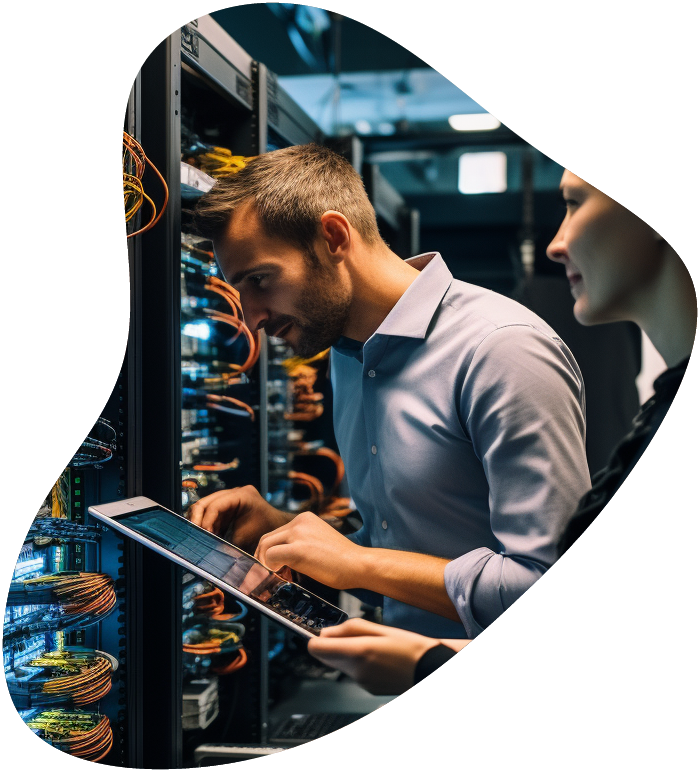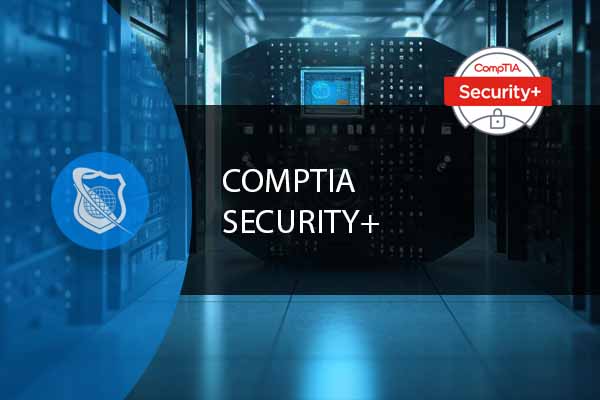In the realm of computing, virtualization stands as a transformative force, reshaping our interaction with technology by creating simulated environments that mirror the functionalities of physical hardware. This innovation allows for a more efficient utilization of resources, paving the way for advancements in how we manage and deploy computing power.
The Essence of Virtualization
At its core, virtualization involves the creation of virtual machines (VMs) on a single physical host, enabling multiple operating systems to run concurrently on a single piece of hardware. Each VM operates independently, with its own operating system, applications, and network identity, yet remains unaware of its virtual nature, mimicking the behavior of a physical computer. This technological marvel not only maximizes the use of hardware but also significantly reduces the need for physical space and energy consumption, illustrating the shift towards more sustainable computing practices.
Network Administrator Career Path
This comprehensive training series is designed to provide both new and experienced network administrators with a robust skillset enabling you to manager current and networks of the future.
A Historical Perspective
The inception of virtualization marked a departure from traditional computing, where physical servers were often underutilized, operating at a mere fraction of their capacity. The advent of virtualization technology allowed for the consolidation of these underused resources, dramatically enhancing efficiency and scalability. Stories of corporations saving vast expanses of data center space highlight the tangible benefits of virtualization, showcasing its impact on operational efficiency and environmental sustainability.
The Architectural Blueprint
Hypervisors, also known as Virtual Machine Monitors (VMMs), are crucial for virtualization, allowing multiple operating systems to share a single hardware host. Each “guest” operates with the appearance of full access to the host hardware, yet it’s the hypervisor that manages these guest systems and ensures they don’t interfere with each other. There are two main types of hypervisors, Type 1 and Type 2, each with its own set of implementations and use cases.
Type 1 Hypervisors (Bare Metal)
Type 1 hypervisors run directly on the host’s hardware to control the hardware and to manage guest operating systems. For this reason, they are considered more efficient and secure than Type 2 hypervisors. Examples include:
- VMware vSphere/ESXi: A widely used enterprise-level solution that offers robust features for data center virtualization. It allows for high scalability and comprehensive management tools.
- Microsoft Hyper-V: Available on Windows Server and some editions of Windows 10 and 11, Hyper-V is a solid choice for Windows-centric environments, offering deep integration with other Microsoft products.
- Citrix Hypervisor (formerly XenServer): Known for its scalability and manageability, Citrix Hypervisor is often used for deploying and managing virtual Windows and Linux desktops and applications.
- KVM (Kernel-based Virtual Machine): A Linux-based open-source option that turns the Linux kernel into a hypervisor. It’s often favored for its integration into Linux environments and its performance.
Type 2 Hypervisors (Hosted)
Type 2 hypervisors run on a conventional operating system just like any other software application. They’re easier to set up and are suited for development, testing, and educational purposes, rather than for running production environments. Examples include:
- VMware Workstation: Designed for professionals that need to run VMs on their local Windows or Linux PCs, offering a broad range of features for development and testing.
- VMware Fusion: Similar to Workstation but for macOS, allowing users to run Windows and other operating systems without rebooting.
- Oracle VirtualBox: A free and open-source option that’s widely used for its flexibility and compatibility with many OS types. It’s suitable for both enterprise and home use.
- Parallels Desktop: Primarily used on Macs to run Windows applications seamlessly alongside Mac applications. It’s known for its ease of use and performance.
Each hypervisor has its strengths and is suited to different scenarios, from enterprise data centers to small-scale development and testing environments. The choice between them often depends on the specific requirements of the task at hand, such as performance, scalability, compatibility, and licensing costs.
Secure Your Networks and Prevent Password Breaches
Our robust CompTIA Sec+ course is the perfect resouce to ensure your company’s most valuable assets are safe. Up your security skills with this comprehensive course at an exceptional price.
Advancements and Applications: The Expanding Horizons of Virtualization
The landscape of virtualization has witnessed a remarkable evolution, transitioning from a novel approach to optimizing hardware utilization to a foundational element of modern IT infrastructure. This transformation is underscored by the diverse advancements and applications of virtualization technology, each contributing to the efficiency, flexibility, and scalability of computing environments.
Beyond the Basics: The Diverse Facets of Virtualization
Virtualization has branched out into several key areas, each addressing specific needs within the IT ecosystem:
- Server Virtualization: The bedrock of virtualization, server virtualization allows multiple operating systems to run on a single physical server as virtual machines, each with its own set of virtual resources. This approach maximizes resource utilization, reduces hardware costs, and simplifies maintenance and disaster recovery.
- Network Virtualization: By abstracting networking components such as switches, routers, and firewalls into software, network virtualization allows for the creation of programmable and scalable networks independent of physical hardware. This flexibility facilitates network segmentation, improves security, and supports dynamic network configurations to meet changing business needs.
- Storage Virtualization: This variant pools physical storage from multiple network storage devices into a single storage device that is managed from a central console. Storage virtualization enhances resource utilization, simplifies storage management, and enables seamless data migration and disaster recovery processes.
- Desktop Virtualization (VDI): Virtual Desktop Infrastructure (VDI) centralizes the management of desktop environments in a data center, allowing users to access their personal desktops remotely. VDI supports a flexible and mobile workforce, offering significant benefits in terms of security, manageability, and cost savings over traditional desktop computing models.
- Application Virtualization: By decoupling applications from the underlying operating system, application virtualization enables applications to run in encapsulated environments. This method allows for easier application deployment, updates, and compatibility across different operating systems, reducing application conflict and streamlining software management.
Cloud Computing: Virtualization’s Grand Stage
The advent of cloud computing represents one of the most significant advancements in virtualization, providing scalable, on-demand computing resources over the internet. Virtualization is the cornerstone of cloud computing, enabling the delivery of a wide range of services, including Infrastructure as a Service (IaaS), Platform as a Service (PaaS), and Software as a Service (SaaS). This paradigm shift has democratized access to computing resources, fostering innovation, agility, and a competitive edge for businesses of all sizes.
Containerization: A New Wave of Virtualization
Containerization has emerged as a lightweight alternative to traditional VMs, encapsulating applications in portable containers that include all necessary executables, binaries, libraries, and configuration files. Containers offer several advantages over VMs, such as faster startup times, reduced overhead, and improved resource utilization. Technologies like Docker and Kubernetes have become synonymous with containerization, revolutionizing application development, deployment, and management in distributed environments.
Software-Defined Networking (SDN) and Beyond
Software-Defined Networking (SDN) extends the principles of virtualization to network management, decoupling the control plane from the data plane and centralizing network intelligence in software controllers. This approach provides unprecedented control over network resources, enabling dynamic, automated, and efficient network configurations that adapt to application needs in real-time. SDN is a key enabler of agile and scalable network infrastructure, paving the way for innovations in network function virtualization (NFV) and beyond.

IT User Support Specialist Career Path
View our comprehensive training series covering all the key elements and certifications needed to successfully excel in an IT User Support Specialist job role.
Challenges and Considerations
While virtualization offers numerous benefits, it also introduces complexities in terms of management, security, and performance optimization. The risk of VM sprawl, security vulnerabilities, and the need for specialized skills to manage virtualized environments are notable challenges that organizations must address to fully leverage the advantages of virtualization.
The Road Ahead
As we delve deeper into the era of digital transformation, virtualization continues to evolve, embracing new paradigms such as edge computing, IoT, and AI-driven automation. The ongoing advancements in virtualization technology promise to further blur the lines between physical and virtual, opening new vistas for innovation and efficiency in the digital age. The journey of virtualization, from a tool for server consolidation to a cornerstone of modern IT infrastructure, underscores its pivotal role in shaping the future of technology.
Security Considerations in Virtualization: Navigating the Virtual Landscape Safely
As virtualization technology continues to evolve and integrate into the core of modern IT infrastructures, it brings along a complex array of security considerations. These challenges stem from the virtual nature of the resources, where the abstraction from physical hardware introduces unique vulnerabilities and potential attack vectors. Understanding and addressing these security concerns is crucial for maintaining the integrity, confidentiality, and availability of virtualized environments.
Shared Resources and Isolation
One of the foundational principles of virtualization is the sharing of physical resources among multiple virtual machines (VMs). While this maximizes efficiency, it also introduces risks associated with improper isolation. Hypervisors, which manage VMs, must ensure complete isolation to prevent one VM from accessing or interfering with another. This isolation is critical not only for security but also for maintaining the operational integrity of each VM.
VM Sprawl and Lifecycle Management
VM sprawl refers to the unchecked growth of VMs, often without proper oversight or management. This can lead to security risks as unmonitored VMs might run outdated or vulnerable software, lack necessary security patches, or even operate without knowledge of the IT department. Effective lifecycle management, including regular audits and monitoring, is essential to mitigate these risks, ensuring that all VMs are accounted for, up to date, and compliant with security policies.
Hypervisor Security
The hypervisor, being the cornerstone of virtualization, represents a high-value target for attackers. Compromising the hypervisor could potentially give an attacker access to all hosted VMs and their data. Ensuring the security of the hypervisor involves applying the principle of least privilege, regularly updating and patching the hypervisor software, and monitoring for unusual activity that could indicate a breach.
Network Security
Virtual networks that connect VMs mirror the complexity and security challenges of physical networks. Segmentation, firewalls, and intrusion detection/prevention systems (IDPS) must be implemented within virtual networks to prevent unauthorized access and lateral movement within the virtual infrastructure. Additionally, the inter-VM traffic must be inspected and managed to prevent the spread of malware or the leakage of sensitive information.
Data Protection and Privacy
In a virtualized environment, data resides on shared storage accessible to multiple VMs, raising concerns about data leakage and privacy. Encryption of data at rest and in transit, along with access controls and audit logs, can help protect sensitive information from unauthorized access or exposure.
VM Escape
A VM escape is a critical security vulnerability where an attacker gains access to the host machine from within a VM. This breach could allow the attacker to control the hypervisor, affecting all VMs on the host. Preventing VM escapes requires strict adherence to security best practices, including using trusted and verified images for VMs, applying security patches promptly, and employing tools to detect and mitigate such attacks.
Compliance and Regulatory Requirements
Virtualized environments must comply with relevant regulatory and compliance standards, which may include specific requirements for data protection, audit trails, and access controls. Navigating these requirements in a virtual context can be challenging, requiring specialized tools and processes to ensure compliance without compromising the flexibility and efficiency that virtualization offers.
Conclusion
Securing a virtualized environment demands a comprehensive and proactive approach that addresses the unique challenges posed by virtualization technology. By focusing on strong isolation practices, vigilant lifecycle management, robust hypervisor protection, secure network configurations, data encryption, and compliance adherence, organizations can significantly mitigate the risks associated with virtualization. As the landscape of virtualization continues to expand, staying abreast of the latest security trends and threats will be paramount in safeguarding the virtual frontier.
Virtualization has undeniably revolutionized the way we perceive and interact with computing resources, offering a blend of efficiency, scalability, and innovation. As we navigate the complexities of this virtual landscape, it becomes clear that the journey of virtualization is far from complete. With each advancement, we edge closer to a future where the full potential of virtual computing is realized, heralding a new era of technological empowerment and environmental stewardship.
Key Term Knowledge Base: Key Terms Related to Virtualization in Computing
Virtualization in computing is a foundational technology that enables multiple operating systems and applications to run on a single physical server or host, by abstracting and dividing the hardware resources. This technology not only increases efficiency and flexibility in the use of hardware but also significantly reduces costs, improves disaster recovery processes, and simplifies management tasks. For professionals and enthusiasts in the field, understanding the key terms associated with virtualization is crucial for navigating, implementing, and optimizing virtual environments effectively. Below is a list of essential terms that will enhance your knowledge and understanding of virtualization in computing.
| Term | Definition |
|---|---|
| Virtualization | The process of creating a virtual version of something, including but not limited to a virtual computer hardware platform, operating system (OS), storage device, or network resources. |
| Hypervisor | A piece of software, firmware, or hardware that creates and runs virtual machines (VMs). It sits between the hardware and the virtual machine and manages the distribution of hardware resources to the VMs. |
| Virtual Machine (VM) | A software emulation of a physical computer that runs an operating system and applications as if they were running on a physical machine. |
| Host | The physical machine on which the virtualization software or hypervisor runs one or more virtual machines. |
| Guest | The virtual machine running on the host machine. |
| Virtual CPU (vCPU) | A portion or share of the physical CPU in the host machine that is allocated to a virtual machine. |
| Virtual RAM | A share of the physical memory from the host machine that is allocated to a virtual machine. |
| Virtual Disk | A file or set of files that emulate a physical disk drive, providing storage for a virtual machine. |
| Snapshot | A saved state of a virtual machine at a specific point in time, which can be used for backup purposes or to return a VM to a previous state. |
| Clone | An exact copy of a virtual machine at the time of cloning, which can be used for testing, backup, or scaling purposes. |
| Virtual Network Interface Card (vNIC) | A virtual version of a physical network interface card, allowing a virtual machine to connect to a network. |
| Virtual LAN (VLAN) | A group of host computers and servers that appear to be on the same LAN despite being distributed across multiple physical locations or networks. |
| Virtual Desktop Infrastructure (VDI) | The practice of hosting a desktop operating system within a virtual machine running on a centralized server. |
| Cloud Computing | The delivery of computing services—including servers, storage, databases, networking, software, analytics, and intelligence—over the Internet (“the cloud”) to offer faster innovation, flexible resources, and economies of scale. |
| Containerization | A lightweight alternative to full machine virtualization that involves encapsulating an application in a container with its own operating environment. |
| Platform as a Service (PaaS) | A cloud computing service that provides a platform allowing customers to develop, run, and manage applications without the complexity of building and maintaining the infrastructure typically associated with developing and launching an app. |
| Infrastructure as a Service (IaaS) | A form of cloud computing that provides virtualized computing resources over the internet. |
| Software as a Service (SaaS) | A software distribution model in which a third-party provider hosts applications and makes them available to customers over the Internet. |
| Network Virtualization | The process of combining hardware and software network resources and network functionality into a single, software-based administrative entity, a virtual network. |
| Storage Virtualization | The pooling of physical storage from multiple network storage devices into what appears to be a single storage device that is managed from a central console. |
This glossary of terms forms a fundamental knowledge base for professionals, students, and enthusiasts delving into the field of virtualization in computing. Understanding these terms is essential for effectively discussing, implementing, and managing virtualized environments.
Frequently Asked Questions Related to Virtualization in Computing
What is virtualization?
Virtualization is a technology that allows you to create multiple simulated environments or dedicated resources from a single physical hardware system. A software called a hypervisor disconnects the physical hardware from the virtual environments, known as virtual machines (VMs). These VMs can run their own operating systems and applications as if they were on their own separate hardware, allowing for more efficient utilization of physical resources.
What are the differences between Type 1 and Type 2 hypervisors?
Type 1 hypervisors, also known as bare-metal hypervisors, run directly on the host’s hardware to control hardware and manage guest operating systems. They are more efficient and secure, suitable for enterprise environments. Type 2 hypervisors, on the other hand, run on a conventional operating system like any other software application. They’re easier to set up and are best suited for development, testing, and educational purposes.
Can I use virtualization for desktop applications?
Yes, desktop virtualization is a popular use case, known as Virtual Desktop Infrastructure (VDI). It allows users to run desktop environments on a central server, which are accessed over a network using a remote display protocol. This setup is useful for managing software versions, performing remote troubleshooting, and providing access to desktop applications from any device, enhancing flexibility and security.
How does virtualization affect network security?
Virtualization can significantly impact network security, both positively and negatively. On the positive side, it allows for better segmentation of networks and more granular control over access to resources. Virtual firewalls and networks can be configured with specific policies for each VM, enhancing security. On the downside, the increased complexity and the potential for misconfiguration can create security vulnerabilities. Additionally, if the hypervisor itself is compromised, all VMs on the host could be at risk. Therefore, maintaining a secure virtualization environment requires careful configuration, regular monitoring, and adherence to best practices in virtual network security.
How does virtualization contribute to cloud computing?
Virtualization is a foundational technology for cloud computing, enabling the cloud’s core features of on-demand resource provisioning, scalability, and multi-tenancy. By abstracting the physical hardware and allowing multiple virtual machines to run on a single physical server, virtualization makes it possible for cloud service providers to offer vast pools of resources that can be dynamically allocated and scaled according to customer demand. This abstraction also supports the deployment of various services, such as software as a service (SaaS), platform as a service (PaaS), and infrastructure as a service (IaaS), making the cloud a versatile environment for hosting a wide range of applications and services.
What is containerization, and how does it compare to virtualization?
Containerization is a type of virtualization that packages an application and its dependencies into a container that can run on any computing environment. Unlike traditional virtualization, where each virtual machine includes a full copy of an operating system, containers share the host system’s operating system kernel and isolate the application processes from the rest of the system. This makes containers much more lightweight and efficient than full virtual machines, allowing for more dense deployment on the hardware and faster startup times.


























